Financial companies building blockchains are driving a $40 billion market transformation as giants from Stripe to JPMorgan abandon third-party solutions in favor of proprietary networks. This Market Insights analysis examines how companies like Stripe (Tempo), Circle (Arc), and Robinhood are pursuing vertical integration strategies that could reshape the entire fintech landscape by 2026.
Summary: Major financial institutions are developing proprietary blockchains to capture transaction fees, control their economic models, and reduce dependency on external networks. The blockchain-in-banking market is projected to reach $40.9 billion by 2029, with a 39.4% CAGR.
Why Financial Companies Are Building Custom Blockchain Networks
The race to build proprietary blockchain infrastructure has accelerated dramatically in 2025, with several major announcements reshaping the competitive landscape. Stripe is developing Tempo, a payments-focused blockchain, while Circle announced Tuesday that it’s building Arc, a blockchain designed for stablecoins.
This wave of blockchain development extends far beyond fintech startups. Coinbase has its own blockchain Base, which has generated more than $130 million in fees since it launched in early 2023. Robinhood announced plans for its own layer-2 solution in June 2025, and competitor eToro is actively exploring similar initiatives.

Key Players and Their Blockchain Strategies
Stripe’s Tempo Network: Built in partnership with crypto venture firm Paradigm, Tempo represents a payments-optimized blockchain compatible with Ethereum’s virtual machine. The project supports Stripe’s broader stablecoin strategy following its $1.1 billion acquisition of Bridge and recent purchase of crypto wallet company Privy.
Circle’s Arc Platform: Designed specifically for stablecoin operations, Arc addresses Circle’s need to control infrastructure costs while diversifying revenue beyond the 96% dependence on Treasury interest earnings that characterized Q2 2025 performance.
JPMorgan’s Kinexys Ecosystem: The bank’s mature blockchain division includes the Liink network with over 400 participating financial institutions and JPM Coin for institutional payments. JPMorgan’s Liink network is one of the most mature projects in the sector, designed to facilitate faster and more secure information exchange among financial institutions.
How Fintech Blockchain Development Drives Revenue Growth
The fundamental motivation for building proprietary blockchains centers on capturing economic value that would otherwise flow to external network operators. “You want to control the economics,” Luca Prosperi, cofounder and CEO of stablecoin infrastructure company M0, told Fortune.
Revenue Potential Analysis
Blockchain networks generate substantial fee income through transaction processing. Base’s $130 million in fees since 2023 demonstrates the revenue potential for companies processing high transaction volumes. For payment processors like Stripe, which handled $1.4 trillion in volume during 2024, even capturing a small percentage of fees represents significant income opportunities.
The blockchain-in-banking market reflects this economic opportunity. Market projections indicate growth from $6.98 billion in 2024 to $10.85 billion in 2025, recording a compound annual growth rate of 55.3%, with continued expansion expected through 2029.
Cost Structure Advantages: Traditional banking systems involve multiple intermediaries and legacy infrastructure costs. By eliminating intermediaries, strengthening data protection, and increasing transparency, blockchain lowers barriers to entry and creates a more inclusive financial environment.
Vertical Integration Benefits
Companies building their own blockchains gain control over the entire transaction stack. “There’s an incentive for these large companies to own the full stack,” Rob Hadick, general partner at crypto venture firm Dragonfly, told Fortune. This integration enables optimization of transaction speeds, cost structures, and user experiences without dependency on external network decisions.
Why Banks Build Own Blockchain Networks: Strategic Analysis
Traditional banks have quietly developed sophisticated blockchain infrastructure over the past several years. Bank of America holds over 80 blockchain-related patents, making it one of the leading financial institutions in terms of blockchain IP.
Consortium Networks and Collaborative Initiatives
Fnality International: Backed by a consortium of global banks including Santander, HSBC, Barclays, and UBS, Fnality’s goal is to simplify cross-border payments through Utility Settlement Coins (USCs), digital representations of fiat currencies.
Canton Network: Led by SIX alongside Deutsche Börse and Goldman Sachs, this initiative creates unified infrastructure for financial markets using advanced cryptographic techniques to maintain data privacy while enabling interoperability.
Project Agora: HSBC and BNP Paribas spearhead this trade finance blockchain that tokenizes invoices and letters of credit, addressing inefficiencies in the $5 trillion annual trade finance market.
These collaborative efforts demonstrate institutional commitment to blockchain infrastructure while highlighting the strategic value of network control for competitive positioning.
Financial Companies Building Blockchains: Market Impact
The shift toward proprietary blockchains creates both opportunities and fragmentation risks within the financial ecosystem. While companies gain greater control over their operations, the proliferation of separate networks could complicate interoperability and user experience.
Defensive vs. Offensive Strategies
Financial institutions pursue blockchain development for different strategic reasons. “Circle is being defensive and reactive, and Stripe is thinking about the future of payments and being offensive and proactive,” according to Dragonfly’s Rob Hadick.
Defensive Positioning: Companies like Circle face revenue concentration risks that blockchain ownership could mitigate. Circle’s 96% revenue dependence on Treasury interest rates creates vulnerability to monetary policy changes, making blockchain fee diversification strategically important.
Offensive Growth: Stripe’s blockchain development supports expansion into stablecoin payments, potentially capturing market share from traditional cross-border payment systems while building new revenue streams.
Regulatory and Compliance Considerations
Public blockchains like Ethereum, XRP Ledger and Solana are increasingly being considered as foundational infrastructure for financial services, but their open nature has attracted regulatory scrutiny. Proprietary networks enable financial institutions to maintain compliance controls while leveraging blockchain efficiency benefits.
Recent regulatory developments, including the proposed GENIUS Act for stablecoin regulation, may accelerate adoption of controlled blockchain environments that meet institutional compliance requirements.
Investment Implications and Market Outlook
The blockchain infrastructure buildout represents a significant capital allocation trend among financial services companies. Enterprise blockchain adoption is accelerating, driven by tokenization of real-world assets projected to reach $600 billion by 2030.
Growth Projections and Market Size
The blockchain-in-banking market is projected to reach $40.9 billion by 2029 with a compound annual growth rate of 39.4%. This growth reflects institutional recognition that blockchain infrastructure provides competitive advantages in transaction processing, cost reduction, and service innovation.
Key Investment Drivers:
- Reduced settlement times from days to minutes for cross-border transactions
- Lower operational costs through automation and reduced intermediary dependencies
- New revenue opportunities through tokenized asset services
- Enhanced regulatory compliance through programmable transaction controls
The market expansion indicates blockchain technology has moved beyond experimental phases into production deployment for critical financial infrastructure.
FAQ: Financial Companies and Blockchain Development
Why are financial companies building their own blockchains instead of using existing networks? Companies build proprietary blockchains to control transaction fees, customize features for specific use cases, ensure regulatory compliance, and reduce dependency on external network decisions.
How much revenue can blockchain networks generate? Coinbase’s Base blockchain generated over $130 million in fees since 2023 launch, demonstrating significant revenue potential for companies processing high transaction volumes.
What are the main benefits of proprietary blockchain networks? Benefits include fee capture, customized functionality, regulatory control, enhanced security, and vertical integration of financial services from infrastructure to applications.
Which financial institutions are leading blockchain development? JPMorgan (Kinexys/Liink), Stripe (Tempo), Circle (Arc), and major banks through consortiums like Fnality International and the Canton Network lead institutional blockchain initiatives.
How large is the blockchain-in-banking market? The market is projected to grow from $10.85 billion in 2025 to $40.9 billion by 2029, representing a 39.4% compound annual growth rate.
What risks do proprietary blockchains create? Risks include network fragmentation, interoperability challenges, high development costs, regulatory uncertainty, and potential user confusion from multiple competing platforms.
How do proprietary blockchains compare to public networks? Proprietary networks offer greater control and compliance capabilities but may sacrifice the network effects, developer ecosystems, and innovation benefits of public blockchains.
What regulatory challenges do financial blockchain projects face? Projects must navigate compliance requirements for payment processing, anti-money laundering, data privacy, and systemic risk management while maintaining blockchain efficiency benefits.
Key Takeaways
Financial institutions are fundamentally restructuring their technology strategies around proprietary blockchain infrastructure, driven by the $40 billion market opportunity and need for transaction fee control. Major players like Stripe, Circle, and JPMorgan are moving beyond blockchain experimentation toward production-scale networks that could reshape financial services delivery. While this trend offers significant revenue and efficiency benefits, the proliferation of separate blockchain networks raises important questions about interoperability and market fragmentation that will shape the industry’s evolution through 2026 and beyond.





